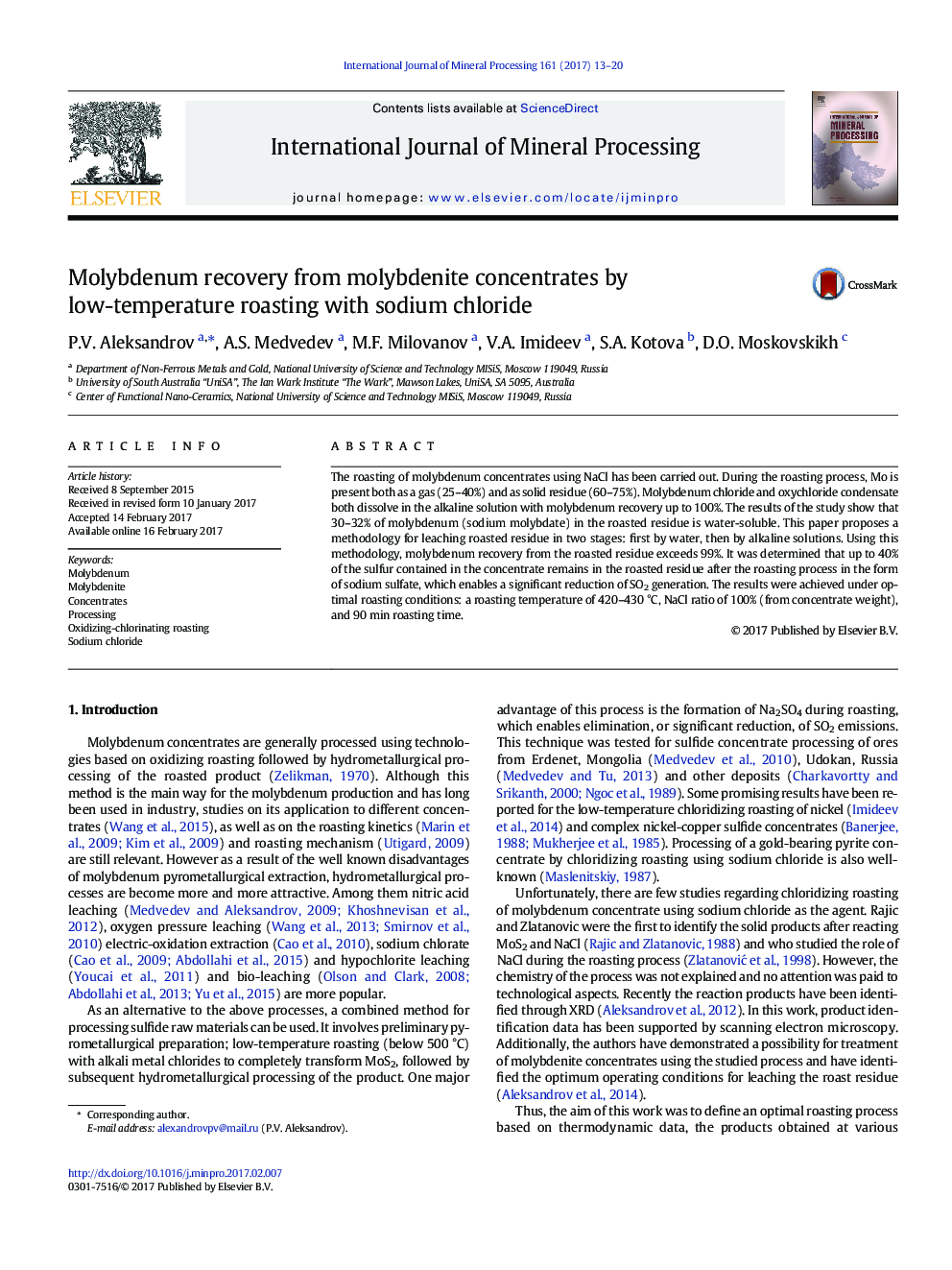| Article ID | Journal | Published Year | Pages | File Type |
|---|---|---|---|---|
| 4769415 | International Journal of Mineral Processing | 2017 | 8 Pages |
Abstract
The roasting of molybdenum concentrates using NaCl has been carried out. During the roasting process, Mo is present both as a gas (25-40%) and as solid residue (60-75%). Molybdenum chloride and oxychloride condensate both dissolve in the alkaline solution with molybdenum recovery up to 100%. The results of the study show that 30-32% of molybdenum (sodium molybdate) in the roasted residue is water-soluble. This paper proposes a methodology for leaching roasted residue in two stages: first by water, then by alkaline solutions. Using this methodology, molybdenum recovery from the roasted residue exceeds 99%. It was determined that up to 40% of the sulfur contained in the concentrate remains in the roasted residue after the roasting process in the form of sodium sulfate, which enables a significant reduction of SO2 generation. The results were achieved under optimal roasting conditions: a roasting temperature of 420-430 °С, NaCl ratio of 100% (from concentrate weight), and 90 min roasting time.
Related Topics
Physical Sciences and Engineering
Chemical Engineering
Chemical Engineering (General)
Authors
P.V. Aleksandrov, A.S. Medvedev, M.F. Milovanov, V.A. Imideev, S.A. Kotova, D.O. Moskovskikh,
